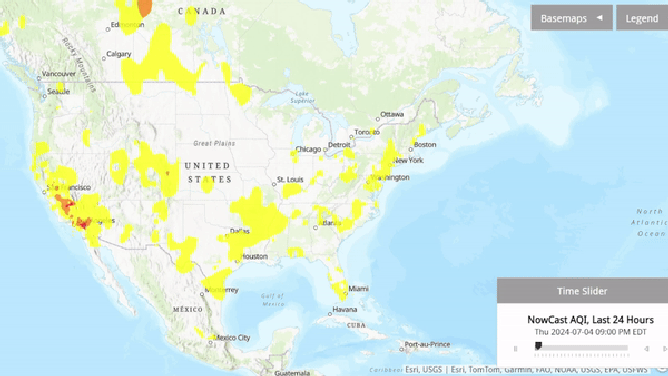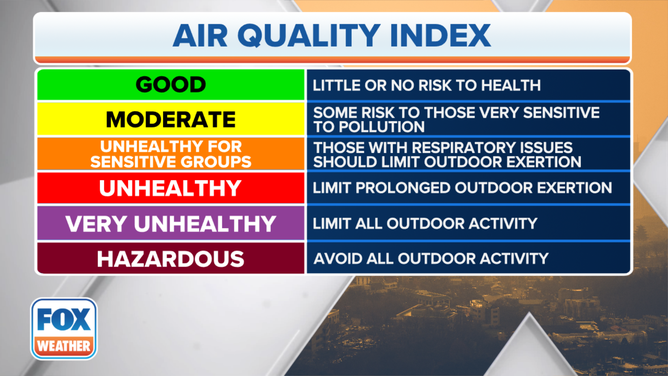How did your city’s air quality fare from the 4th of July fireworks?
Researchers at Brigham Young University said microscopic particles, known as PM2.5, pose significant health risks. Fireworks emit high levels of barium and copper, which contribute to air pollution. The Air Quality Index (AQI) ranges from 0 to 500 and has six color-coded categories that correspond to different health concerns.
See how America celebrated its 258th birthday
Fireworks filled the sky from coast to coast on July 4, 2024.
As millions watched firework displays across the country, smoke from the miniature rockets caused air quality readings to nosedive to levels considered unhealthy during the night of celebrations.
The U.S. Environmental Protection Agency’s AIRNow program collects real-time data from over 1400 air quality sites around the country and found that many readings reached at least the moderate stage on July 4th.
The Air Quality Index (AQI) ranges from 0 to 500 and is divided into six color-coded categories corresponding to different health concerns.
The metro Los Angeles area reported a daily AQI of 122, while Detroit experienced a value of 136.
Levels that exceed 100 but stay below 151 are considered unhealthy for sensitive groups.
Some communities in the Midwest and along the West Coast even temporarily reached categories classified as very unhealthy, which poses risks for everyone.
THE AIR QUALITY INDEX EXPLAINED: WHAT AIR QUALITY IS BAD?
A recent study by researchers at Brigham Young University looked at the microscopic particles fireworks produce and said their results were troubling.
"We know we’re breathing in these particles that are unhealthy during firework events, dust storms, or winter inversions," Greg Carling, a professor at BYU said in a statement. "But what’s actually in the particulate matter? No one really knew before this study."
Over a time period of two years, the group said their findings showed increases in metal pollution around the times of firework displays.
Chemicals such as arsenic, cadmium, lead and thallium were prevalent in samples, for which prolonged exposure is known to cause health problems.
Health issues can range from minor episodes, such as coughing, to more serious impacts, such as asthma and cardiovascular disease.
Like fireworks, wildfires contribute to airborne particulate matter, known as PM2.5 pollution.
Areas with relaxed winds, where ridges of high pressure are in control, can keep pollution levels high with limited disbursement.
Some communities in the West saw the presence of smoke from both fireworks and wildfires, which caused AQI levels to reach near the top of the charts.
The BYU research team said it hopes that future research will examine the health effects of metal pollution and lead to policy changes regarding what type of fireworks can be used during celebrations.
Until changes occur, Carling recommends that thrill-seekers take advantage of city firework displays and stay indoors during periods of poor air quality.
According to the American Pyrotechnics Association, approximately 300 million pounds are ignited annually, with the majority used in personal pyrotechnic displays.


